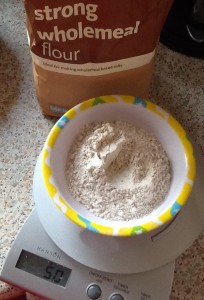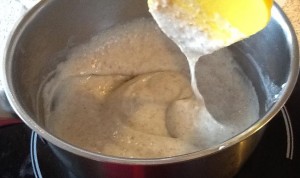I found this cool site, promoting the book “Experimental cookery from the chemicals and physical standpoint” by Belle Lowe (okay I am a nerd, read on as it may be interesting for bread maker enthusiasts). A section of the book describes factors that may change the properties of gluten and hence its tenacity or cohesiveness, and its elasticity or extensibility. Belle describes that, “the properties of gluten can be altered by: (1) grinding, (2) bringing the dough to a certain acidity or alkalinity and subsequent neutralization, (3) treating with alcohol, (4) salts, (5) alkalies, (6) acids, (7) proportion of water used, (8) added substances, (9) temperature, (10) time of standing, (11) mechanical treatment of the dough, and (12) fermentation. By understanding and working with the principles described by Belle we can make some seriously good bread.
Coming across the use of TangZhong in bread making is like magic, better than fairy dust for bread. It makes my bread springy, soft and fluffy (almost like eating cotton candy).
Ingredients for making TangZhong (makes approximately 240 g)
- 1) 50 g bread flour (Plain or wholemeal or seed and grain bread flour works)

- 2) 250 mL water or fresh milk
Method for making TangZhong
1) Mix the flour with 100 mL of cold water or milk and make into a paste with a spatula.
2) Add the rest of the cold water or milk ensuring that there are no lumps.
3) Heat the flour mixture on low heat (about 65 degrees C) stirring continuously to prevent sticking and burning. It takes about 3 minutes.
4) Once the flour paste had thickened, your TangZhong is ready. Transfer it into a clean bowl and cover with a cling wrap to cool. You can keep the TangZhong to about 3 days in the refrigerator .
For the chemists out there:

By making an initial paste in Step 1, this step will ensure that the flour is evenly mixed and hydrated. By heating the flour paste to 65 degrees C, the hydration of the gluten in the flour is enhanced making the dough more elastic and less tenacious. This increase in elasticity is important, for without this quality, the cell walls of the dough would break and coalesce before the temperature was reached at which the protein is coagulated (making hard bread).
If you have tried baking bread with TangZhong, I can guarantee you that there is no turning back. You will be so hooked and addicted to bread containing TangZhong!
